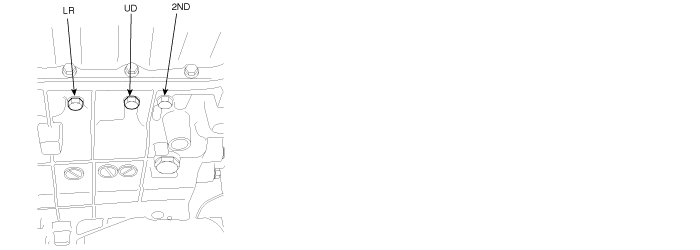Perform the "STALL TEST" with gear position "2".
Specification : 2000~2700 engine rpm
※ This test is possible only for "HOLD S/W" or "SPORTS MODE" applied vehicles.

UD/C | OD/C | REV/C | 2ND/B | LR/B | OWC | |
P | ● | |||||
R | ● | ● | ||||
N | ● | |||||
D1 | ● | ● | ○ | |||
D2 | ● | ● | ||||
D3 | ● | ● | ||||
D4 | ● | ● |
※ Low & Reverse Brake is released when the vehicle speed is over 7Km/h(5 MPH).
Stall test procedure in D2 and reason
Procedure
Warm up the engine
After positioning the select lever in "D" , depress the foot brake pedal fully after that, depress the accelerator pedal to the maximum
* The slippage of 1st gear operating parts can be detected by stall test in D2.
Reason for stall test
If there are mechanical defaults in A/T, all slippage occurs in the torque converter.
Therefore, engine revolution is output, but input and output speed revolution must be "zero" due to wheel's lock.
If 2nd brake system(2nd gear operating part) has faults, input speed revolution will be out of specification.
If wheel spin occurs, the applied brake force is not adequate. Retry using more brake force.






